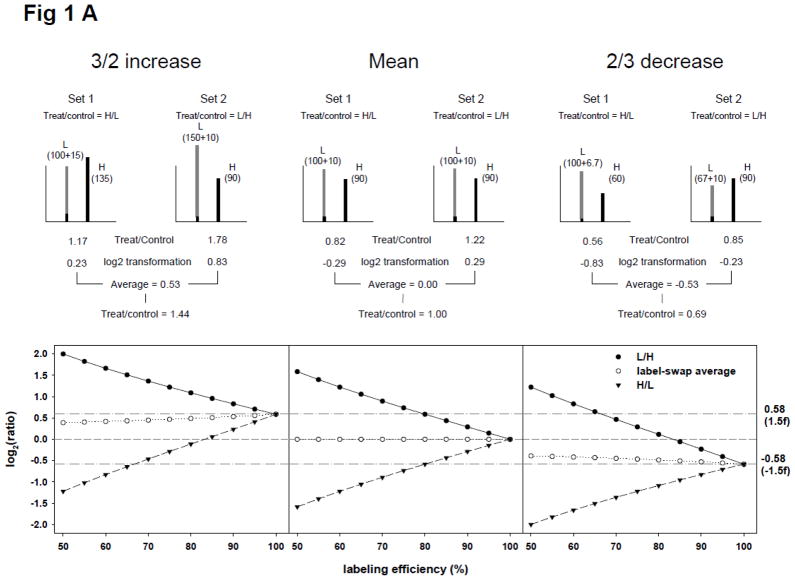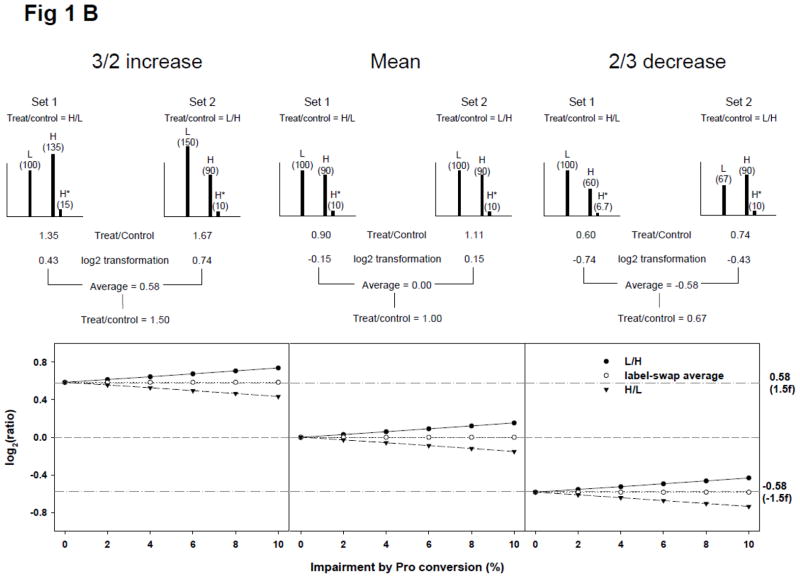Figure 1.
Theoretical calculation of SILAC ratios. (A) Effect of incomplete isotope labeling on SILAC ratios in a practical cell stimulation paradigm. In a theoretical situation in which proteins in the heavy condition (H) in set 1 and the light condition (L) in set 2 (labeled with isotope to 90%) were treated with a stimulus, and the expected ion intensities of SILAC doublet of a peptide are shown in the upper panel. The theoretical data demonstrates that ion intensity of light peptide in SILAC doublet increased by the addition of unlabeled light peptide from H. The ratios of mean, 3/2 increase, and 2/3 decrease in set 1 were calculated to be lower than expected and ratios in set 2 were calculated to be higher than expected. These errors however would be corrected by averaging label-swap replicate SILAC experiments. The lower panel demonstrates the effect of label-swap averaging on SILAC ratios with various labeling efficiencies; (B) Effect of arginine-to-proline conversion on SILAC ratios. The arginine-to-proline conversion process reduces the ion intensity of heavy state entities by generating satellite peaks containing heavy proline. We posited that proteins in H were completely labeled with isotope but ion intensities of proline-containing heavy peptides were reduced by 10% through the arginine-to-proline conversion process. The upper panel demonstrates how label-swap replication could solve the conversion errors. The lower panel demonstrates the effect of arginine-to-proline conversion on SILAC ratios with various conversion percentages. The value of log2(1/1) was shown with dash line and ones of log2(3/2) and log2(2/3) were shown with dashed-dot lines.


